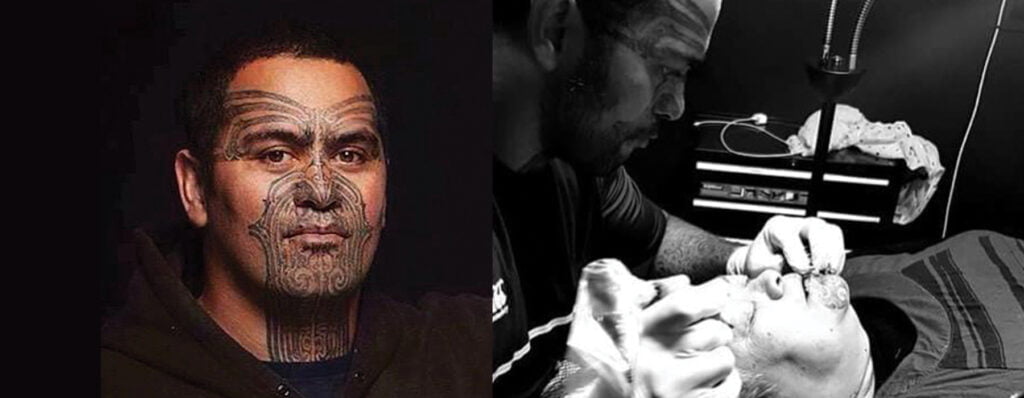 What is a ta moko tattoo?
What is a ta moko tattoo?
The primary difference between contemporary and ta moko tattoos is that ta moko comes with a steeped history. In Māori culture ta moko tattoo is about skin art and telling stories: the process of getting a tattoo involves a healing transformation that goes deep inside your soul; it realigns the vibrations of your very being to bring goodness into your life.
How long have you been doing it?
I started practicing the ta moko tattoo as a teenager. The industry wasn’t very big in New Zealand back then, and I discovered it through a group of friends. We were just young boys being mischievous. The first tattoo I did was to someone in the dormitory of the boarding school I attended in the 90s.
You tattooed your grandmother …
Tattooing my grandmother, my mother and my sister was very meaningful to me. Bringing back the female facial tattoo – ‘the moko kauae’ – and being able to tattoo three generations of family was an honour. I’ve been lucky to tattoo a few families in New Zealand and to continue the cross generational gifting of the moko is one of my goals in life. The moko kauae was completely abolished and eradicated in Māori culture, so bringing that back to modern families is a very humbling experience.
Tell us about your clients in Singapore…
Over the past decade there has become a big demand for ta moko tattoos in Singapore. I have a strong client base there ranging from Kiwis, Canadians, British and local Singaporeans. Ages range from teenage expat Kiwis whose parents encourage it, up to local guys in their 60s.
“Eighty percent of my body is covered and I tattoo myself”
Do you ever turn clients down, and if so, why?
Yes, people who don’t understand that the moko is all about storytelling. If you struggle to tell your story, it can be hard to come up with appropriate moko markings for you. If people approach me with a ‘tattoo industry attitude’ where they just want to pick a nice design with no meaning, I’ll explain that I’m probably not the right artist for them.
 How many tattoos do you have, and do you do them yourself?
How many tattoos do you have, and do you do them yourself?
Eighty percent of my body is covered and I tattoo myself. They have a season, a time of year, so people within my culture are continually getting ta moko tattoos. I add designs to myself about every two years. My facial tattoo is ongoing – you can see the ink on my forehead is darker as it’s the most recent.
Being so steeped in culture, what do your tattoos mean to you personally?
Moko is my life: it’s taken me around the world, it has fed my family, it’s everything. It’s a big role for me within my tribe to be responsible for the resurrection of an ancient art form. The upkeep of the gifted self is a huge responsibility for my own tribal boundaries, if not the major thing that holds my being together.
How does the ta moko link to healing?
It goes back to genealogy, the healing properties of the land, and the alteration of the physical being through moko. I can literally change what you look like through moko, and with the right intent and purpose, you can align yourself spiritually and psychologically through that process.
What are your views on the global tattoo scene?
It has definitely become more commercial, but it is what it is. I’m an artist at heart so I appreciate all different art forms. It’s genuinely amazing what some people can produce and I like to be inspired by everything.








